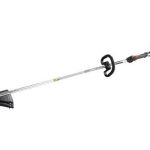Drought is one of the major enemies of folks trying to keep a nice lawn and garden. An extended drought can destroy years of hard work. There are ways you can prepare for drought conditions, whether it is a rare event or you live in an area that faces drought conditions year-in and year-out.
Courtesy: Phil Roeder via Flickr
Preparing for a Drought – Long in Advance
You can prepare you lawn for a drought far in advance through putting in the appropriate plants and setting yourself up for success. This is something we’ve covered before – see our article on xeriscaping we’ve published previously for ideas in regards to grasses and plants that are bred for drought resistance.
Preparing for a Drought – Not too Far Ahead of Time
If you get prior warning for an upcoming drought, you can take some actions. While prediction of a drought is difficult, as long as you know the patterns of weather in your area, you can at least get a head start on a possible drought. Here are some of the best steps to take ahead of time:
- Prepare your soil by removing thatch and reducing the compaction of the soil – possibly through aeration. This will allow for what little moisture that may arrive to penetrate with little trouble. This will make watering during a drought more effective.
- Do not apply nitrogen fertilizers, herbicides, and pesticides – these chemicals can make the grass more frail and susceptible to drought.
- Water late in the day, infrequently and heavily.
- Do not cut more than a third of the grass blade at once. Taller blades develop a deeper root system.
- Collect and save water, storing it in sealed containers. This will help out when drought conditions bring out bans in water usage – you’ll already have some saved up.
Care During a Drought
Once you’ve established that a drought has started – when you have not had precipitation for a week or you have had extended high temperatures – you will need to take steps to reduce the abuse on your lawn.
- Reduce or eliminated traffic on your lawn.
- Decide which area of your lawn are most important, and ensure that these areas get as much water as possible, even if it means reducing the amount of water given to other areas of the lawn.
- Raise mowing height or eliminate mowing entirely.
- Allow your lawn to go dormant, particularly if you have hardy, drought-resistant grasses such as Zoysia or Bermuda that have been bred to survive times without water.
- Water deeply when possible, but do not give your lawn more than 1 inch at a time. Any more than that will not be absorbed and may run off. Do not water during windy times – the wind can increase evaporation, reducing the effectiveness of watering
By following these ideas for before and during a drought, you can ensure that your lawn that you have worked so hard to cultivate survives and thrives after the drought. It will reduce the likelihood of your lawn dying off, or of long-lasting issues. These will be particularly useful if you see cyclical droughts, year-after-year.






